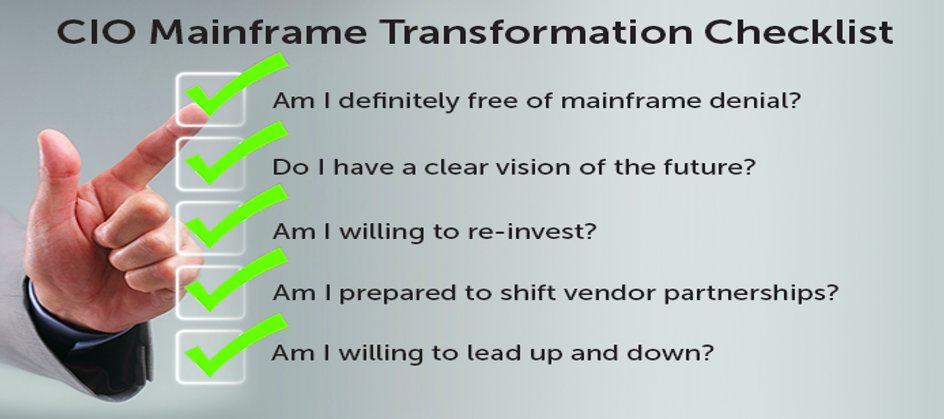Despite utterly foolish predictions to the contrary, the mainframe persists as the core computing engine for global commerce. That’s because 1) investments in mainframe code are irreplaceable and not practically re-platformable, 2) the performance economics of the mainframe are unmatched, and 3) IBM’s rollout of the z13 demonstrates that the mainframe platform is actually out-evolving x86 hardware.
Unfortunately, IT leaders have far too often neglected their mainframes—despite the critical importance of the platform, its applications, and its data. In fact, it is exactly because mainframe environments run so well that IT leaders have become excessively pre-occupied by distributed and cloud environments that produce headaches in abundance.
This abdication of mainframe leadership, however, is no longer tenable. If your company has a mainframe, there is nothing benign about your neglect thereof. On the contrary, continued failure to transform your mainframe, technology, processes and culture is costing your company dearly.
Here, then, is a checklist for IT leaders charged with ensuring that their companies get maximum business value from all of their technology investments—including mainframe hardware, COBOL applications, and data.
Checklist #1: Am I definitely free of mainframe denial?
Mainframe denial generally takes one of two forms. One is a deluded belief that the mainframe will eventually just go away. The other is that the mainframe status quo is “good enough.” IT leaders who drift towards either of these states of denial cannot successfully drive essential mainframe transformation.
Checklist #2: Do I have a clear vision of the future?
It’s not enough to know that mainframe technology, processes and culture must change. IT leaders need to know how they must change. That vision of change must include a future in which the mainframe is:
- aggressively leveraged to deliver customer-driven innovation
- highly agile
- technically and operationally integrated with distributed and cloud
- staffed by DevOps professionals who are not mainframe-centric
Checklist #3: Am I willing to re-invest?
Mainframe transformation requires incremental investment in new tools and training. IT leaders who focus exclusively on mainframe cost reduction—and refuse to engage in smart re-investment—will not reap the substantial benefits and savings associated with cross-platform Agile/DevOps.
Checklist #4: Am I prepared to shift vendor partnerships?
Mainframe transformation doesn’t just require new investments. It also requires different investments, especially in application development and SDLC. IT leaders must therefore be willing to re-think even their longest-standing vendor relationships without constraint by inertia or misplaced loyalties—and without being tempted by seemingly sweet deals on inferior tools.
Checklist #5: Am I willing to lead up and down?
Mainframe transformation doesn’t just require IT leaders to lead the people below them on the org chart. It also requires advocacy up and across the org chart. That’s because—unlike mobile, cloud, or containerization— the mainframe is not the “flavor of the week” in the C-suite.
If you can confidently check all these boxes, then you’re ready to transform your company’s mainframe into a powerful source of digital superiority for years to come. If you can’t, then you may want to re-consider your thinking about the mainframe—because denial, delay, and disinvestment won’t move the needle on your company’s ability to compete in the ever-evolving digital economy.
This article originally posted on LinkedIn Pulse, March 14, 2016.









0 Comments